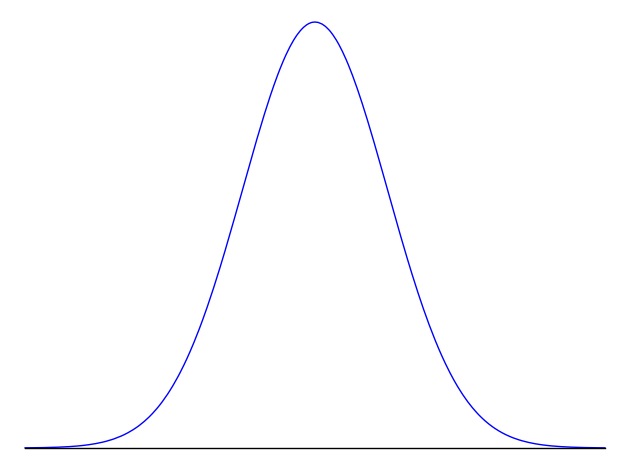Section 9.1 What is Bell-shaped?
You should have noticed by now that many distributions tend to have a bell-shaped graph as parameters are allowed to increase. Indeed, the formulas for skewness \(\gamma_1\) and kurtosis \(\gamma_2\) approach 0 and 3 respectively for the Hypergeometric 6.4.2, Hypergeometric 6.4.2, Negative Binomial 7.4.7, Poisson 8.2.5, and Gamma 8.4.3 Distributions. Each of these "limiting distributions" appear to be symmetrical (i.e. \(\gamma_1=0\)) with horizontal asymptotes of 0. The general model looks like:

One might wonder if this is just a happy coincidence or is something more insidious at play. The answer by appealing to mathematics reveals that nothing sinister is going on but that it is indeed true that the eventual destiny for distributions is one that is bell-shaped. It is therefore of interest to figure out if that distribution has a nice form that can be accessed directly. The focus of this chapter is to consider this bell-shaped goal known as the "normal distribution."
We present the normal distribution by simply presenting it’s probability function without derivation. In order to more carefully investigate the development of the normal distribution (and the Chi-Square Distribution) you will need to study "Moment Generating Functions" and some serious mathematics. Without supplying this rigor you can still utilize the results.
